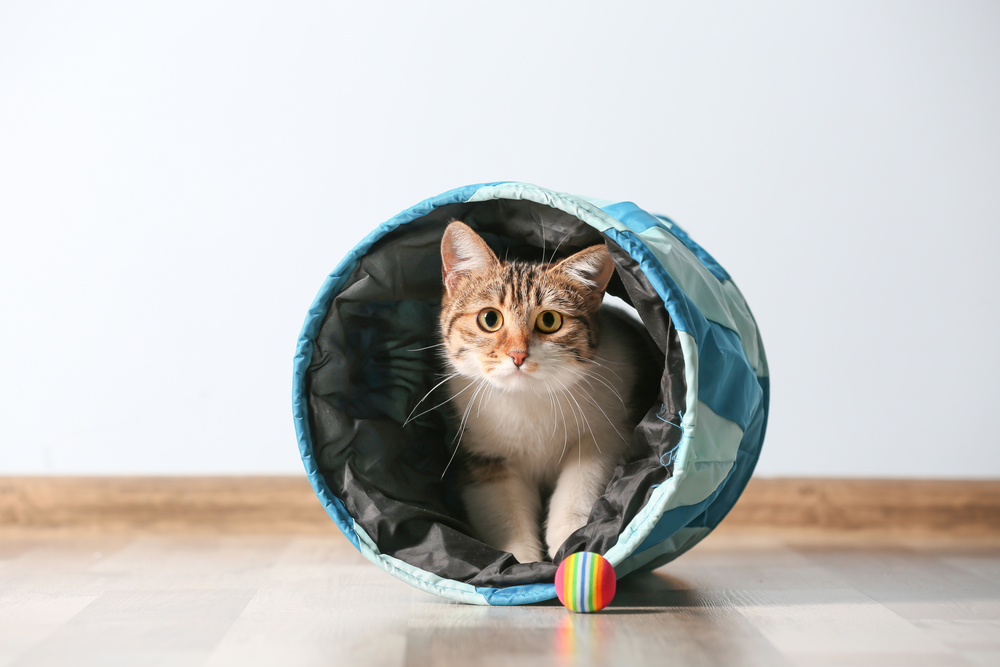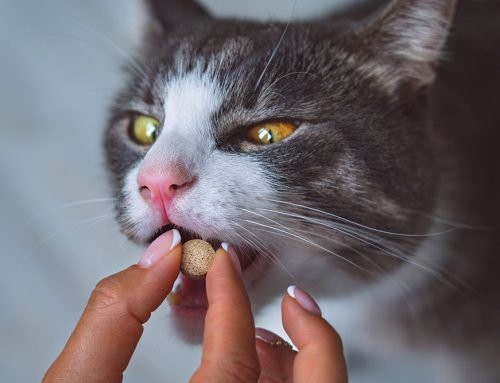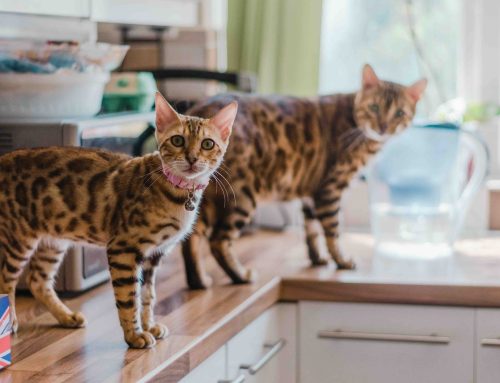Watching the same birds fluttering outside their favorite window every day has got to be boring for a house cat. Once known as a sleek predator, now they can only claim the “house cat pooch” that sags below their belly, as they sit and wait for their food dish to be filled again. The typical indoor cat follows a similar daily routine—they wake up to eat, then slowly drift off to sleep again. Dogs have it better, as they can leave the home for walks, training classes, sporting events, and daycare, but cats generally don’t enjoy such choices. That means your house kitty is relying on you to spice up their day. While you can’t sign up your cat for doggy daycare, you can implement a variety of feline-friendly environmental enrichment ideas that will stimulate your pet physically and mentally.
What is environmental enrichment for pets?
You may have heard about environmental enrichment for zoo animals, which allows wild animals to express natural behaviors to stay physically and mentally healthy. You can introduce more variety into a wild animal or house cat’s life in countless ways, to make it more stimulating. Supply environmental enrichment with activities similar to those your cat would typically do if left to their own devices, such as stalking, pouncing, hunting, scratching, perching, resting, and marking their territory, along with the ability to consume meals in a natural way.
Why is environmental enrichment important for my cat?
When an animal can’t perform the activities they would do in the wild, such as grazing, roaming, breeding, hunting, and exploring, they may become bored and stressed. This can lead to the animal developing abnormal behaviors as a coping mechanism. House cats are the same as zoo animals in this regard. Wild animals and cats who become stressed because they cannot participate in natural behaviors may display the following stress-related problems:
- Less activity and weight gain
- Over sensitivity to unexpected events
- Development of repetitive behaviors
- Self-harm (e.g., excessive grooming, hair pulling)
- Signs of fear or aggression
One of the most common signs of stress and anxiety in cats is inappropriate elimination. Owners will complain their cat is urinating everywhere except in the litter box and, while they may have a urinary tract infection, feline idiopathic cystitis is often the cause. Young, healthy cats can easily become stressed through lack of environmental enrichment, which may turn into bladder inflammation and inappropriate urination.
In addition to the mental benefits that environmental enrichment provides, your cat will also enjoy the physical health benefits. More than half the U.S. pet population is overweight, which can lead to diabetes, heart issues, hypertension, arthritis, and some cancers.
What examples of environmental enrichment can I use for my cat?

With cats, you can combine various types of enrichment into one item. For example, you can install a climbing tower next to a window overlooking a bird feeder. This one item will help fulfill your cat’s needs to scratch, climb, perch, rest, and stalk prey. Other examples of feline environmental enrichment include:
- Scratching posts — Scratching, which allows cats to practice nail care, stretch, and leave scent markers to mark territory and communicate with other cats, is a necessary outlet. Vertical scratching posts are the most common, but cats also need horizontal scratching surfaces. Sisal appears to be the preferred scratching surface, but try other surfaces to see what your cat likes best. Place scratching posts near your cat’s sleeping areas, since they will likely go to their post to stretch when they wake up. For maximum effectiveness, ensure each post is at least as tall or as long as your fully stretched-out cat.
- Toys — Cats need a variety of toys to fulfill their various prey preferences. Some cats may enjoy bird-like toys with feathers, while others prefer rodent-type toys that are fuzzy and skitter along the floor. Ohio State University has created an excellent guide to help you determine your cat’s prey preference so they can successfully practice their stalking, pouncing, and hunting skills.
- Resting areas — Cats prefer safe, secure, out-of-the-way resting areas such as a perch at the top of a climbing tower, or a cozy bed hidden behind a piece of furniture.
- Vertical space — As cats are both predator and prey, they instinctually need to be up high to survey their territory for threats or food. Make good use of your vertical space with cat-friendly shelving, tall towers, and high perches.
While many people consider cats low-maintenance pets who don’t require much more than food and a bed, your feline friend needs environmental enrichment to maintain mental and physical health.
Have you noticed your cat demonstrating stress or anxiety signs? A lack of environmental enrichment may be the cause. Schedule an appointment with your Alisos Animal Hospital team to determine the cause of your feline friend’s abnormal behavior and help spice up their life.








Leave A Comment